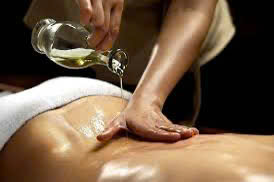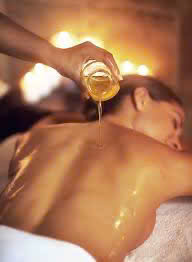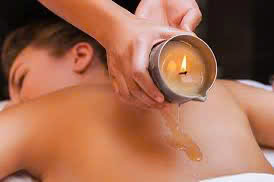Understanding Aromatherapy massage & Hot Oil Massages: What You Need to Know
Aromatherapy massage and hot oil massage are two popular therapeutic treatments that have gained widespread recognition for their relaxing and healing properties. Both practices involve the use of fragrant oils and soothing techniques, but they differ in purpose, methodology, and benefits. Whether you’re seeking stress relief, pain management, or simply a moment of tranquility, understanding these therapies can help you make an informed decision about which one is right for you.
In this comprehensive guide, we will explore what is aromatherapy massage and hot oil massage, delve into their unique benefits, differentiate what is the difference between aromatherapy massage and hot oil massage, discuss which one is right for you, and highlight why you should try these wonderful treatments. By the end of this article, you’ll have a clear understanding of these therapies and how they can enhance your well-being.

Aromatherapy Massage and Hot Oil Massage
Both aromatherapy massage and hot oil massage are deeply rooted in traditional healing practices and modern wellness routines. They emphasize the importance of touch, temperature, and aromatic essences to promote physical and mental health. Despite their overlapping characteristics, each offers distinct experiences tailored to specific needs.
Before diving into specifics, it’s essential to recognize that these massages are more than just luxurious indulgences—they are holistic approaches that balance body, mind, and spirit. Their popularity stems from their natural, non-invasive nature, making them accessible options for individuals seeking alternative or complementary therapies.
In this section, we’ll explore the foundational concepts behind each practice, including their origins, core principles, and how they are typically administered.
The Origins and Philosophy Behind These Massages
Aromatherapy massage combines the therapeutic properties of essential oils with the skillful art of massage therapy. Its roots can be traced back to ancient civilizations such as Egypt, China, and India, where plant extracts and oils were used medicinally and ritualistically. The philosophy centers around the idea that essential oils contain potent molecules capable of influencing physical, emotional, and spiritual well-being.
Hot oil massage, on the other hand, has its origins in various indigenous healing traditions across Asia, particularly Ayurveda in India, and traditional Chinese medicine. It emphasizes the application of warm, nourishing oils to relax muscles, improve circulation, and detoxify the body. The warmth enhances the absorption of oils and facilitates deeper tissue relaxation.
Both practices share a common goal: to foster relaxation, relieve tension, and promote overall health through skin contact and aromatic stimulation. Their differences lie largely in the specifics—what is aromatherapy massage and hot oil massage—and the focus of each treatment.

What is aromatherapy massage and hot oil massage
Understanding what is aromatherapy massage and hot oil massage involves examining their fundamental processes, ingredients, and techniques. These therapies, while similar in their use of oils, serve slightly different purposes and employ unique methods to maximize their effects.
Defining Aromatherapy Massage
What is aromatherapy massage? At its core, it is a massage technique that uses essential oils extracted from plants, flowers, herbs, and other botanical sources. These oils are carefully selected based on their therapeutic properties—such as lavender for relaxation, eucalyptus for congestion, or peppermint for invigorating energy.
During an aromatherapy massage, these oils are diluted in a carrier oil—like jojoba, coconut, or almond—and then applied to the skin through gentle, rhythmic strokes. The massage therapist may incorporate various techniques such as Swedish, deep tissue, or Shiatsu, depending on individual needs.
The significance of aromatherapy lies not only in the physical manipulation but also in the inhalation of aromatic vapors, which stimulate the olfactory system. This dual approach amplifies the massage’s efficacy, influencing emotional states and reducing stress levels.
Defining Hot Oil Massage
What is hot oil massage? It is a therapeutic massage that employs warm, often herbal-infused oils to penetrate the skin deeply, relax muscles, and invigorate the body’s energy flow. The process involves heating the oils to an optimal temperature, usually through gentle warming methods, before applying them generously over the body.
The primary focus of hot oil massage is on muscle relaxation, improved blood circulation, and detoxification. The heat enhances the permeability of the skin, allowing the active compounds in the oils to reach deeper tissues. This can result in relief from chronic muscular pain, stiffness, and joint discomfort.
While what is aromatherapy massage and hot oil massage share similarities—both use oils and promote relaxation—they differ notably in their emphasis. Aromatherapy massage relies heavily on aromatic oils for emotional and psychological benefits, whereas hot oil massage emphasizes warmth and physical relaxation.
How Are They Typically Performed?
In practice, what is aromatherapy massage and hot oil massage can vary based on the practitioner’s style and client preferences. Usually, sessions last between 60 to 90 minutes, providing ample time for thorough application and deep relaxation.
For aromatherapy massage, essential oils are blended into carrier oils and applied using long, flowing strokes aimed at easing muscle tension. The therapist often incorporates breathing exercises to deepen aromatic inhalation, fostering a calming environment.
In hot oil massage, the therapist heats the oils, tests the temperature for safety, and then applies them with steady, firm movements. The warmth helps melt away stress, loosen stiff muscles, and promote overall vitality.
Both treatments might include additional techniques like acupressure, stretching, or reflexology to target specific issues. Ultimately, the choice of oils, techniques, and session goals depends on individual health concerns and preferences.

Benefits of Aromatherapy Massage and Hot Oil Massage
Both aromatherapy massage and hot oil massage offer a multitude of benefits, ranging from physical relief to mental clarity. Incorporating these therapies into your wellness routine can significantly enhance quality of life by addressing stress, pain, and emotional imbalances.
In this section, we’ll detail the various advantages, supported by scientific insights and anecdotal evidence, that make these massages highly sought after by individuals across the globe.
Physical Benefits
Relief from Muscular Tension and Pain
One of the most immediate benefits of both massages is the alleviation of muscular tension. The gentle, rhythmic strokes combined with the properties of infused oils can soothe sore muscles, reduce stiffness, and improve flexibility. Hot oil massage, with its warmth, penetrates deeply into tissues, providing relief from chronic pain conditions such as arthritis and fibromyalgia.
Improved Circulation and Lymphatic Drainage
Enhanced blood flow is a key benefit. Warm oils and skilled massage techniques stimulate capillaries and promote better oxygen and nutrient delivery to tissues. Additionally, lymphatic drainage helps remove toxins, supporting immune function and reducing swelling.
Skin Nourishment and Hydration
Oils rich in antioxidants, vitamins, and fatty acids hydrate and nourish the skin. Regular treatments can improve skin texture, elasticity, and tone, leaving the skin soft, supple, and rejuvenated.
Emotional and Mental Benefits
Stress Reduction and Relaxation
Both therapies excel at inducing deep relaxation. The aromatic properties of essential oils influence limbic system activity—the brain’s emotional center—reducing cortisol levels and promoting calmness. The warmth and sensory experience create a peaceful environment, easing anxiety and depression.
Enhanced Sleep Quality
Many essential oils like lavender and chamomile have sedative effects, making aromatherapy massage especially effective for those suffering from insomnia or sleep disturbances. The physical relaxation combined with aromatic inhalation fosters restful sleep.
Mental Clarity and Focus
Certain essential oils, such as eucalyptus and peppermint, invigorate the mind, improve concentration, and lift mood. These benefits make aromatherapy massage suitable for mental fatigue and burnout.

Holistic Health Benefits
Balance of Energy and Chakras
From an Ayurvedic perspective, hot oil massage—or Abhyanga—is believed to balance the body’s energies and align chakras, leading to overall harmony. The warming oils and gentle strokes help clear blockages and restore vitality.
Detoxification and Immune Boosting
The combination of heat and oil promotes sweating and toxin release, aiding detoxification processes. Regular massages can strengthen the immune system, ward off illnesses, and promote longevity.
Supporting Specific Health Conditions
Both therapies can be tailored to address particular health issues such as headaches, migraines, chronic fatigue, or respiratory problems, making them versatile complementary treatments.
Summary of Benefits Table
| Benefit Category | Aromatherapy Massage | Hot Oil Massage |
|---|---|---|
| Muscular pain relief | Yes | Yes |
| Stress reduction | Yes | Yes |
| Skin nourishment | Yes | Yes |
| Improved circulation | Yes | Yes |
| Enhanced sleep | Yes | Moderate |
| Mental clarity | Yes | No |
| Detoxification | Moderate | Yes |
| Energy balancing | Yes (via aromatherapy) | Yes (via warmth and oils) |
What is the difference between aromatherapy massage and hot oil massage
Though often conflated, what is the difference between aromatherapy massage and hot oil massage is significant in terms of their focus, techniques, and intended outcomes.
Focus and Objectives
Aromatherapy massage primarily aims to influence emotional and mental health through aromatic inhalation and skin absorption of essential oils. Its goal is to evoke specific psychological responses—calm, alertness, or invigoration—making it ideal for stress management, emotional imbalance, and mood enhancement.
Hot oil massage concentrates on physical relaxation, muscle recovery, and circulation. The warmth of the oils enhances their penetration and facilitates deep tissue work. Its main objective is to alleviate physical ailments, improve mobility, and support detoxification.
Use of Oils and Aromatics
In aromatherapy massage, the choice of essential oils is critical. Each oil has unique properties and therapeutic effects, and blends are customized based on individual needs. The aromatic component is absorbed through the skin and inhaled, influencing both mind and body.
Hot oil massage employs warm, often herbal oils without necessarily emphasizing aroma. The oils are selected for their nourishing qualities and ability to retain heat, focusing on their physical benefits rather than aromatic influence.
Techniques and Application Methods
Aromatherapy massage involves gentle, flowing strokes that enhance relaxation and aromatic inhalation. It may incorporate breathing exercises for maximum benefit.
Hot oil massage involves applying heated oils with firmer strokes designed to penetrate deep into muscles. The temperature of the oils plays a pivotal role here, creating a soothing, warming effect.
Suitability and Outcomes
Aromatherapy massage suits individuals seeking emotional relief, mental clarity, or mood regulation. It is often recommended for stress, anxiety, and sleep issues.
Hot oil massage is preferred by those needing muscular relief, increased circulation, or detoxification. Athletes, people with chronic pain, or those recovering from injuries may find this particularly beneficial.
Summarized Difference List
- Primary focus: Emotional/psychological vs. physical/muscular
- Main ingredients: Essential oils with aromatic properties vs. nourishing herbal oils
- Technique emphasis: Light strokes with inhalation vs. deep, warmed application
- Intended outcomes: Mood stabilization and relaxation vs. muscle recovery and detoxification
Understanding what is the difference between aromatherapy massage and hot oil massage enables clients to select the therapy aligning best with their needs and health goals.
Which one is right for you
Choosing between aromatherapy massage and hot oil massage depends on your personal health objectives, preferences, and specific conditions. Assessing your needs thoroughly can help determine which therapy will deliver the most benefit.
Consider Your Primary Goals
If your main concern revolves around emotional stress, mental fatigue, or sleep disorders, aromatherapy massage might be more suitable. Its aromatic elements and gentle strokes create a tranquil environment conducive to emotional healing.
Conversely, if you suffer from chronic muscular pains, stiffness, or require physical detoxification, hot oil massage could be the better option. The warmth and deep tissue focus make it highly effective for physical ailments.
Personal Preferences and Sensory Sensibilities
Some individuals may prefer the fragrant, aromatic experience of aromatherapy massage, finding the scents uplifting or calming. Others may favor the intense warmth and physical sensation associated with hot oil massage.
Sensitivities to certain essential oils or heat should also be considered. For instance, pregnant women or people with skin allergies should consult practitioners for appropriate formulations and temperatures.
Medical Conditions and Contraindications
Specific health conditions may influence your choice:
- Anxiety, depression, sleep issues: Aromatherapy massage is likely more beneficial.
- Musculoskeletal injuries, arthritis, or muscle tension: Hot oil massage provides targeted relief.
- Skin sensitivities or allergies: May require modifications or alternative therapies.
Combining Both Therapies
Some wellness centers offer integrated sessions combining the aromatic and thermal benefits. If undecided, discussing your needs with a trained therapist can help tailor a session that combines elements of both.
Making an Informed Decision
Ultimately, the decision hinges on your individual wellness goals. Reflect on what you seek—emotional balance or physical relief—and consult with qualified practitioners who can advise based on your health profile. Remember that both therapies are adaptable and can be customized to suit your unique needs.
Why should you try these
Engaging in aromatherapy massage and hot oil massage can significantly elevate your wellness journey. These therapies offer a natural, holistic approach to health, with minimal side effects and profound benefits.
Enhancing Overall Well-Being
Regular sessions can help you manage daily stress, improve sleep, and boost mood. They serve as proactive measures to maintain mental and physical health, preventing fatigue and burnout.
Complementary to Conventional Medicine
These massages can complement medical treatments, especially for chronic conditions, by alleviating symptoms and improving quality of life. They encourage relaxation and healing, which are vital components of holistic health.
Personal Pampering and Self-Care
Beyond their therapeutic benefits, why should you try these? Because they provide an opportunity for self-care and mindfulness. Taking time out for a massage is an act of self-love, offering a much-needed break from the hustle and bustle.
Accessibility and Versatility
Both therapies are adaptable to various settings—from luxury spas to community clinics—and can be tailored to individual preferences. Whether you opt for a quick refresh or a deep-dive relaxation session, these massages fit seamlessly into diverse lifestyles.
Scientific Support and Growing Popularity
Research continues to validate the benefits of aromatherapy and hot oil therapies. Their rising popularity underscores their effectiveness and acceptance in mainstream wellness practices.
Final Thoughts
Trying aromatherapy massage and hot oil massage is an investment in your health and happiness. These therapies promote a balanced, healthier lifestyle, offering relief, relaxation, and renewal—mind, body, and spirit.https://jobedubaispa.com/hot-stone-and-deep-tissue-massage/
Conclusion
Aromatherapy massage and hot oil massage are profoundly healing therapies rooted in ancient tradition and modern wellness science. While what is aromatherapy massage and hot oil massage share similarities in using natural oils and touch, their focal points differ—aromatic influence for emotional and mental health, and warmth for physical relief. The numerous benefits of aromatherapy massage and hot oil massage encompass both body and mind, addressing pain, stress, sleep, and overall vitality. Recognizing what is the difference between aromatherapy massage and hot oil massage helps you choose the most suitable treatment aligned with your health goals. Whether which one is right for you depends on your specific needs, preferences, and health conditions, but embracing either or both can significantly enhance your well-being. Ultimately, why should you try these therapies? Because they offer a natural, holistic pathway to relaxation, healing, and self-care that nurtures your body and soul in a gentle yet effective way.https://maps.app.goo.gl/2gfYPJNYythhZesU6?g_st=com.google.maps.preview.copy
